Text
Fashion Designing Essentials: Education for Aspiring Designers
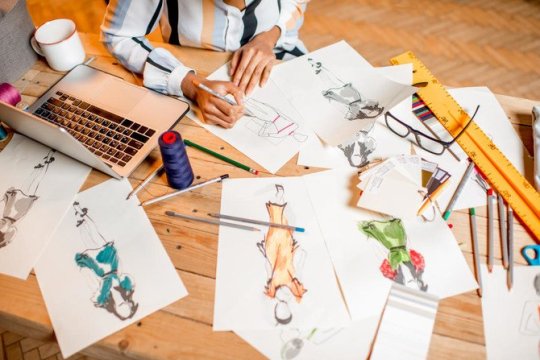
Fashion design is a dynamic and multifaceted field that requires a combination of creativity, skill, and industry knowledge. For aspiring designers, acquiring the essential education is crucial to navigating the complexities of the fashion industry and building a successful career. In this blog, we'll delve into the fundamental aspects of fashion designing education and explore how the Indian Institute of Fashion and Design (IIFD) provides aspiring designers with the essential tools and knowledge needed to thrive in this competitive industry.
Understanding Design Principles:
At the core of fashion design education are the fundamental design principles that form the basis of creative expression. Students at IIFD learn about color theory, composition, silhouette, proportion, and texture, gaining a deep understanding of how these elements come together to create visually compelling designs. Through practical exercises and hands-on projects, aspiring designers hone their skills in applying these principles to their own creations.
Developing Technical Skills:
In addition to creativity, aspiring designers must possess a strong foundation in technical skills to bring their designs to life. At IIFD, students receive comprehensive training in pattern-making, draping, sewing, and garment construction. From sketching their initial concepts to producing fully realized garments, students gain the practical expertise needed to translate their ideas into wearable fashion.
Exploring Fashion History and Trends:
A thorough understanding of fashion history and trends is essential for aspiring designers to contextualize their work and stay informed about industry developments. Through courses in fashion history and trend forecasting, students at IIFD gain insights into the evolution of fashion over time and learn how to identify emerging trends and influences. This knowledge equips them with the foresight to create designs that are both innovative and relevant to contemporary audiences.
Learning Business and Marketing Skills:
While creativity is a cornerstone of fashion design, aspiring designers must also possess a solid understanding of business and marketing principles to succeed in the industry. At IIFD, students learn about branding, merchandising, retailing, and entrepreneurship, gaining the skills needed to navigate the business side of fashion. By understanding the market landscape and consumer behavior, aspiring designers can effectively position their brands and products for success.
Join one of the Best Fashion Design Colleges in Kolkata like IIFD - Indian Institute of Fashion and Design in Salt lake Kolkata (@iifdkolkata) and embark on a transformative journey towards realizing your creative aspirations. Our comprehensive programs provide aspiring designers with the essential education, skills, and industry knowledge needed to thrive in the competitive world of fashion. Visit our website to learn more about our courses, admissions process, and how you can start your journey towards a successful career in fashion design at IIFD.
Conclusion:
Fashion designing education is essential for aspiring designers to develop the skills, knowledge, and expertise needed to succeed in the fast-paced and competitive fashion industry. At the Indian Institute of Fashion and Design (IIFD), we are committed to providing aspiring designers with the essential tools and education needed to unlock their creative potential and build successful careers in fashion design. With our comprehensive programs and industry-focused curriculum, we empower aspiring designers to turn their passion for fashion into reality.
#Fashion Education#Fashion Design#Fashion Designing#IIFD#IIFD Kolkata#careers#education#fashion design college#fashion design institute#fashion design course#fashion design education
0 notes
Text
Continuing Education in Fashion Design: Lifelong Learning in a Dynamic Field

In the fast-paced and ever-evolving world of fashion design, staying ahead of the curve requires more than just talent and creativity – it requires a commitment to lifelong learning. Continuing education in fashion design is essential for staying relevant, honing your skills, and embracing new trends and technologies in this dynamic field. In this blog, we explore the importance of lifelong learning in fashion design and how it can shape your career trajectory.
Embracing Evolution:
Fashion design is a field that is constantly evolving, with new trends, technologies, and techniques emerging at a rapid pace. Continuing education allows designers to stay abreast of these changes, ensuring that their skills and knowledge remain current and relevant. Whether it's mastering new software tools, learning about sustainable design practices, or exploring emerging trends, lifelong learning is essential for adapting to the evolving demands of the industry.
Expanding Horizons:
Continuing education in fashion design offers opportunities for designers to expand their horizons and explore new areas of interest within the field. Whether it's delving into textile design, exploring fashion marketing and merchandising, or specializing in a niche area such as bridal wear or sustainable fashion, lifelong learning allows designers to pursue their passions and carve out their own unique path within the industry.
Fostering Innovation:
Lifelong learning in fashion design is not just about mastering existing skills; it's also about fostering innovation and pushing the boundaries of creativity. By exposing themselves to new ideas, perspectives, and techniques, designers can break free from creative ruts, explore new avenues of expression, and push the envelope of what is possible in fashion design. Lifelong learners are often the ones driving innovation and leading the way in shaping the future of the industry.
Ready to embark on a journey of lifelong learning in fashion design and take your career to new heights? Join the top fashion design college in Kolkata, IIFD Salt lake Kolkata – where creativity meets opportunity, and learning knows no bounds. Our continuing education programs in fashion design are designed to help you stay ahead of the curve, expand your skillset, and embrace new opportunities in this dynamic field. Whether you're a seasoned professional looking to upgrade your skills or a budding designer eager to explore new horizons, we offer a range of courses and workshops to suit your needs. Visit IIFD Kolkata website to learn more about our continuing education programs, admissions process, and upcoming events. Your journey to lifelong learning in fashion design starts here!
Conclusion:
In the ever-changing world of fashion design, lifelong learning is not just a choice; it's a necessity. By embracing continuing education, designers can stay ahead of the curve, expand their horizons, and foster innovation in this dynamic field. Whether it's mastering new skills, exploring new areas of interest, or pushing the boundaries of creativity, lifelong learning is essential for staying relevant and thriving in the fast-paced world of fashion design. So, embrace the journey of lifelong learning, seize every opportunity to expand your horizons, and let your passion for fashion design propel you to new heights of success.
#Learning#Education#fashion#fashion design#fashion designing#iifd#iifd kolkata#careers#fashion design education#fashion design college#fashion design course#fashion design institute#interior designing
1 note
·
View note
Text
Behind the Seams: The Art and Science of Fashion Design
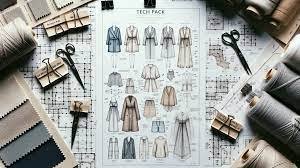
Fashion design is a captivating blend of artistry and technical expertise, where creativity meets craftsmanship to bring visions to life. Behind every stunning garment lies a meticulous process that combines aesthetic intuition with scientific precision. In this article, we delve into the fascinating world of fashion design, exploring the symbiotic relationship between art and science that drives innovation and excellence in the industry.
The Creative Process:
At the heart of fashion design lies the creative process – a journey of inspiration, exploration, and experimentation. Designers draw inspiration from a myriad of sources, from nature and culture to art and architecture, translating their visions into sketches, mood boards, and fabric swatches. This initial phase is where the seeds of creativity are sown, laying the foundation for the design to come to life.
From Concept to Creation:
As the design takes shape, the science of garment construction comes into play, guiding the technical aspects of pattern-making, draping, and sewing. Designers must understand the principles of garment construction, including fabric properties, body proportions, and fit, to ensure that their creations not only look beautiful but also feel comfortable and flattering on the body. Precision and attention to detail are paramount as designers navigate the intricacies of seams, darts, and closures to bring their designs to fruition.
Materials Matter:
The choice of materials is another crucial aspect of fashion design that marries art with science. Designers must consider factors such as fabric weight, texture, and drape when selecting materials for their garments, ensuring that they align with the aesthetic vision and functional requirements of the design. Advances in textile technology have expanded the palette of possibilities, offering designers a wide range of sustainable and innovative materials to experiment with.
The Intersection of Tradition and Innovation:
Fashion design is a dynamic field that thrives on the interplay between tradition and innovation. While designers draw inspiration from the rich tapestry of fashion history, they also push the boundaries of creativity through experimentation with new techniques, technologies, and materials. This constant dialogue between the past and the future is what keeps fashion design at the forefront of artistic expression and cultural evolution.
Join us at IIFD Kolkata, the Best Fashion Design College in Kolkata – where tradition meets innovation, and craftsmanship meets creativity. Our fashion design programs are designed to equip you with the skills, knowledge, and expertise needed to thrive in this dynamic industry. From sketching and pattern-making to garment construction and runway presentation, we offer hands-on training and expert guidance to help you turn your passion for fashion into a successful career. Enroll at the best Fashion Design College in Kolkata to learn more about our courses, admissions process, and upcoming events. Your journey to becoming a fashion designer starts here!
Conclusion:
Fashion design is a captivating blend of art and science, where creativity and technical expertise converge to create garments that inspire, delight, and captivate. Behind every stunning creation lies a story of passion, dedication, and innovation – a testament to the limitless possibilities of human imagination. As we unravel the mysteries behind the seams, let us celebrate the artistry and ingenuity of fashion design and the endless potential it holds for shaping the world around us.
#Behind the Seams#Art and Science#Fashion Design#Fashion Designing#iifd#careers#education#fashion design institute#fashion design college#fashion designing#fashion styling
0 notes
Text
Fashion Design Trends: Exploring What's New and Next in Fashion
Fashion is a dynamic and ever-evolving industry, with trends constantly emerging, evolving, and reshaping the landscape of style. From bold prints and vibrant colors to innovative silhouettes and sustainable practices, the world of fashion is always buzzing with excitement and anticipation.
In this article, we'll take a closer look at the latest trends shaping the fashion industry and how IIFD Kolkata can help you stay ahead of the curve.
Sustainable Fashion:
With growing awareness of environmental issues and ethical concerns, sustainability has become a major focus in the fashion industry. Designers are embracing eco-friendly materials, ethical production practices, and circular design principles to minimize their environmental impact and promote a more sustainable future. At IIFD Kolkata, we're committed to educating the next generation of designers on the importance of sustainability and equipping them with the skills and knowledge needed to create fashion that's both stylish and sustainable.
Genderless Fashion:
Gender fluidity and inclusivity are driving forces in the fashion industry, with designers challenging traditional notions of masculinity and femininity and embracing a more gender-neutral approach to design. From unisex clothing lines to genderless runway shows, fashion is becoming increasingly diverse and inclusive. At IIFD Kolkata, we celebrate diversity and encourage our students to explore new forms of expression and push the boundaries of gender norms in their designs.
Digital Fashion:
As technology continues to revolutionize the way we experience fashion, digital fashion is emerging as a major trend in the industry. From virtual fashion shows and digital avatars to augmented reality try-on experiences, designers are finding innovative ways to merge the physical and digital worlds. At IIFD Kolkata, we're at the forefront of digital innovation, offering courses that teach students how to harness the power of technology to create immersive and engaging fashion experiences.
Bold Prints and Colors:
In a world that's often dominated by neutral tones and minimalist designs, bold prints and vibrant colors are making a comeback in a big way. From psychedelic patterns and geometric motifs to eye-catching hues and neon accents, designers are embracing boldness and self-expression in their collections. At IIFD Kolkata, we encourage our students to experiment with color and pattern, helping them develop their own unique visual language and signature style.
Slow Fashion:
In contrast to the fast-paced nature of the fashion industry, slow fashion is gaining momentum as a movement towards more mindful and intentional consumption. With a focus on quality over quantity, craftsmanship over mass production, and longevity over trends, slow fashion encourages a more thoughtful and sustainable approach to dressing. At IIFD Kolkata, we instill the values of craftsmanship, quality, and longevity in our students, preparing them to create fashion that stands the test of time.
Conclusion:
Fashion design trends are constantly evolving, reflecting the ever-changing tastes, values, and aspirations of society. From sustainability and inclusivity to digital innovation and self-expression, the latest trends in fashion offer endless opportunities for creativity and innovation. At IIFD Kolkata - the best fashion designing college in Kolkata, we're dedicated to staying at the forefront of these trends, providing our students with the skills, knowledge, and inspiration they need to thrive in the dynamic world of fashion. Join IIFD Kolkata and explore what's new and next in fashion today.
#Trends#fashion design#fashion designing#iifd#iifd kolkata#careers#fashion#fashion education#designing#design education#education#fashion design college#fashion design education#fashion design institute
0 notes
Text
Navigating the Job Market in Fashion Design

Entering the job market in fashion design can be both exhilarating and daunting, as aspiring designers navigate a landscape of opportunities, challenges, and competition. Whether you're a recent graduate seeking your first job or a seasoned designer looking to advance your career, understanding how to navigate the job market effectively is essential for success.
In this blog, we'll explore key strategies and insights to help aspiring fashion designers navigate the job market with confidence and purpose, with guidance from the Indian Institute of Fashion & Design to support your journey.
Define Your Career Path:
Before diving into the job market, take the time to clarify your career goals and aspirations. Identify your areas of interest, whether it's womenswear, menswear, childrenswear, accessories, or niche specialties like sustainable fashion or costume design. Consider the type of company or organization you'd like to work for - whether it's a high-end fashion house, a mass-market retailer, a design studio, or a startup. By defining your career path upfront, you can focus your job search efforts and tailor your application materials to align with your goals.
Build Your Portfolio:
Your portfolio is your most powerful tool for showcasing your skills, creativity, and design aesthetic to potential employers. Take the time to curate a strong portfolio that highlights your best work, including sketches, technical drawings, mood boards, and completed projects. Tailor your portfolio to the specific requirements of each job application, emphasizing relevant experience and skills that demonstrate your suitability for the role. Regularly update your portfolio with new projects and achievements to reflect your growth and development as a designer.
Network Strategically:
Networking is a critical component of navigating the job market in fashion design, providing opportunities to connect with industry professionals, recruiters, and fellow designers. Attend industry events, fashion shows, and networking mixers to expand your professional network and learn about job opportunities. Join professional organizations, online forums, and social media groups to stay informed about industry trends, job openings, and networking opportunities. Cultivate genuine relationships with contacts in the industry, and be proactive in reaching out for informational interviews and mentorship opportunities.
Research Companies and Opportunities:
Before applying for jobs, research companies and organizations that align with your career goals and values. Familiarize yourself with their brand identity, design aesthetic, target audience, and corporate culture to ensure a good fit. Monitor job boards, company websites, and industry publications for job openings and internship opportunities that match your skills and interests. Tailor your application materials—including your resume, cover letter, and portfolio—to demonstrate your understanding of the company and your suitability for the role.
Prepare for Interviews:
Preparing for job interviews is essential for making a positive impression on potential employers and showcasing your qualifications and suitability for the role. Research commonly asked interview questions in the fashion industry and prepare thoughtful responses that highlight your skills, experience, and passion for design. Practice presenting your portfolio and discussing your design process, inspirations, and previous projects with confidence and clarity. Dress professionally and bring copies of your resume and portfolio to the interview to leave a lasting impression.
Stay Persistent and Resilient:
Navigating the job market in fashion design can be a competitive and challenging process, requiring persistence, resilience, and determination. Don't be discouraged by rejection or setbacks—instead, use them as opportunities for growth and learning. Stay proactive in your job search efforts, continuously expanding your network, refining your portfolio, and seeking out new opportunities. Remember that finding the right job may take time, but with patience and perseverance, you'll eventually find a role that aligns with your goals and aspirations.
Conclusion:
Navigating the job market in fashion design requires careful planning, strategic networking, and persistence in the face of challenges. By defining your career path, building a strong portfolio, networking strategically, researching companies and opportunities, preparing for interviews, and staying persistent and resilient, you can position yourself for success dynamically and competitively industry. At IIFD - Indian Institute of Fashion & Design, we're committed to supporting aspiring fashion designers as they navigate their career journeys. Contact us today to learn more about our fashion design programs and how we can help you achieve your career goals in the exciting world of fashion.
Ready to launch your career in fashion design with confidence and purpose? Join the Best Fashion Design College in India like IIFD - Indian Institute of Fashion & Design and gain the skills, knowledge, and industry connections you need to succeed in the competitive job market. Contact IIFD to learn more about our fashion design programs and take the first step toward a rewarding career in the exhilarating world of fashion.
#Jobs in Fashion#Fashion Design#Fashion Industry#Fashion Designing#careers#iifd#education#iifd chandigarh#fashion design education#fashion design institute#fashion design course
0 notes
Text
Interior Designing Trends: Past, Present, and Future
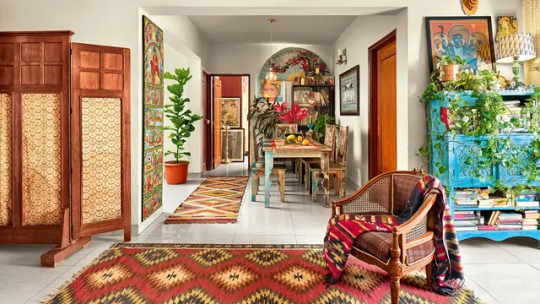
Interior design is a dynamic field that continuously evolves with changing tastes, technologies, and societal influences. By tracing the trends from the past to the present and looking ahead to the future, we gain insight into the diverse styles that have shaped interior design over the years. Join us on a journey through time as we explore the fascinating world of interior designing trends.
Past Trends:
In the past, interior design was often characterized by distinct stylistic movements that reflected the cultural, political, and technological landscape of the time. Some notable trends include:
Victorian Era (1837-1901): Characterized by ornate furnishings, rich colors, and intricate detailing, Victorian interiors exuded opulence and grandeur.
Art Deco Movement (1920s-1930s): Art Deco embraced geometric shapes, bold colors, and luxurious materials, epitomizing the glamour and sophistication of the Jazz Age.
Mid-Century Modernism (1940s-1960s): Marked by clean lines, organic forms, and minimalist aesthetics, Mid-Century Modern design emphasized functionality and simplicity.
Retro Revival (1970s-1980s): The 1970s and 1980s saw a resurgence of retro styles, with bold patterns, vibrant colors, and eclectic furnishings inspired by past decades.
Present Trends:
In the present day, interior design trends are characterized by a blend of contemporary influences and timeless aesthetics. Some prevalent trends include:
Minimalism: Minimalist design continues to be popular, emphasizing simplicity, clean lines, and clutter-free spaces.
Biophilic Design: With a focus on incorporating elements of nature into interiors, biophilic design promotes health, well-being, and sustainability.
Sustainable Design: Increasing awareness of environmental issues has led to a rise in sustainable design practices, such as using eco-friendly materials and energy-efficient solutions.
Smart Technology Integration: The integration of smart technology into interiors, including home automation systems and IoT devices, enhances convenience, comfort, and connectivity.
Future Trends:
Looking ahead, several emerging trends are poised to shape the future of interior design:
Virtual Reality Design: Advancements in virtual reality technology will revolutionize the design process, allowing designers and clients to visualize spaces in immersive 3D environments.
Flexible and Multifunctional Spaces: As lifestyles continue to evolve, there will be a growing demand for flexible and multifunctional spaces that adapt to diverse needs and activities.
Wellness-Focused Design: Designing spaces that prioritize health and wellness, incorporating features such as circadian lighting, air purification systems, and biophilic elements, will become increasingly important.
Artisanal and Handcrafted Elements: With a resurgence of interest in craftsmanship and artisanal techniques, handmade furniture, textiles, and decor will add warmth and character to interiors.
At IIFD - Indian Institute of Fashion & Design (@iifd), they are dedicated to staying at the forefront of interior design trends and equipping IIFD students with the skills and knowledge needed to thrive in the ever-evolving industry. Whether you're passionate about preserving the legacy of past styles, embracing the latest innovations, or shaping the future of design, IIFD offers comprehensive programs that cater to diverse interests and career aspirations. Join One of the best Interior Design Colleges in India like IIFD embark on a journey of creativity, innovation, and endless possibilities in the world of interior design.
Conclusion:
From the ornate extravagance of the Victorian era to the sleek minimalism of the present day and the futuristic innovations of tomorrow, interior design trends reflect the evolving tastes, technologies, and lifestyles of society. By understanding the trends of the past, embracing the trends of the present, and anticipating the trends of the future, designers can create spaces that are not only aesthetically pleasing but also functional, sustainable, and conducive to well-being. IIFD invites you to explore the rich tapestry of interior design trends and embark on a journey of creativity, inspiration, and innovation.
#iifd#careers#education#iifd chandigarh#interior design#interior designing#Interior Designing Trends#Interior Designing Trend#Interior Design Trends#Interior Designing#interior designer
0 notes
Text
Handmade Creations in Interior Design: An Artisanal Celebration
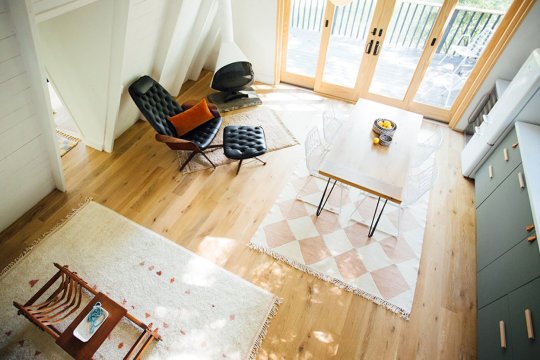
In a world where mass-produced goods dominate the market, there's a growing appreciation for handmade creations that embody craftsmanship, authenticity, and individuality. Handmade items add soulfulness and character to interior spaces, infusing them with a sense of warmth, charm, and uniqueness. From handcrafted furniture and artisanal textiles to handmade ceramics and custom artwork, handmade creations in interior design are a celebration of human creativity and skill.
In this article, we'll explore the beauty of handmade creations and how they can elevate your interior design aesthetic to new heights.
The Art of Craftsmanship:
Handmade creations are a testament to the art of craftsmanship, passed down through generations and honed over time. Whether it's the intricate joinery of a handcrafted table, the delicate brushstrokes of a hand-painted mural, or the precise weaving of a handmade rug, each piece is imbued with the skill, dedication, and passion of the artisan who created it. By incorporating handmade items into your interior design, you not only support traditional craft techniques but also bring a sense of authenticity and artistry into your home.
Uniqueness and Individuality:
One of the most compelling aspects of handmade creations is their uniqueness and individuality. Unlike mass-produced items that are identical and ubiquitous, handmade pieces are one-of-a-kind treasures that tell a story and reflect the personality of their creator. Whether it's a handmade vase with subtle variations in glaze, a hand-knotted rug with intricate patterns, or a hand-carved sculpture with unique textures and details, each piece adds a layer of personality and charm to your interior spaces.
Sustainability and Ethical Practices:
In an era of heightened awareness about environmental sustainability and ethical consumption, handmade creations offer a more sustainable and ethical alternative to mass-produced goods. By supporting local artisans and small-scale producers, you can reduce your carbon footprint and minimize the environmental impact of your purchases. Handmade items are often crafted using natural, sustainable materials and traditional techniques that prioritize quality, longevity, and mindful consumption, making them a more eco-friendly choice for conscientious consumers.
Customization and Personalization:
Handmade creations offer the opportunity for customization and personalization, allowing you to create bespoke pieces that are tailored to your specific needs and preferences. Whether you're commissioning a custom piece of furniture, collaborating with an artist on a custom artwork, or working with a textile designer to create a custom fabric, handmade items give you the freedom to express your unique style and personality in your interior design. By investing in handmade pieces, you can create a home that truly reflects who you are and what you love.
A Timeless Investment:
Handmade creations are not just beautiful additions to your home; they're also timeless investments that appreciate in value over time. Unlike mass-produced items that may lose their appeal or functionality over time, handmade pieces often become cherished heirlooms that are passed down from generation to generation. By investing in handmade creations, you're not just buying a product – you're investing in a piece of artistry, craftsmanship, and history that will enrich your life and home for years to come.
Ready to celebrate the beauty of handmade creations in your interior design? Explore the Interior Design courses at One of the best Interior Designing Colleges in India Like IIFD - Indian Institute of Fashion & Design and gain the knowledge and skills to incorporate handmade items into your design projects. Join us in celebrating the artistry, craftsmanship, and individuality of handmade creations. Visit the IIFD website https://iifd.in/ to learn more and enroll today!
Conclusion:
Handmade creations in interior design are a celebration of craftsmanship, authenticity, and individuality, adding soulfulness and character to interior spaces. By incorporating handmade items into your interior design, you support traditional craft techniques, celebrate uniqueness and individuality, promote sustainability and ethical practices, enjoy customization and personalization, and make a timeless investment in artistry and craftsmanship. So, embrace the beauty of handmade creations and infuse your home with the artistry, authenticity, and soulfulness that only handmade items can provide.
#Handmade Creations#Handmade Creation#Interior Design#Interior Designing#iifd#iifd chandigarh#careers#education#Interior Designer#interior furniture#architecture#interior decor
0 notes
Text
Designing for Functionality: The Importance of Ergonomics in Interior Education
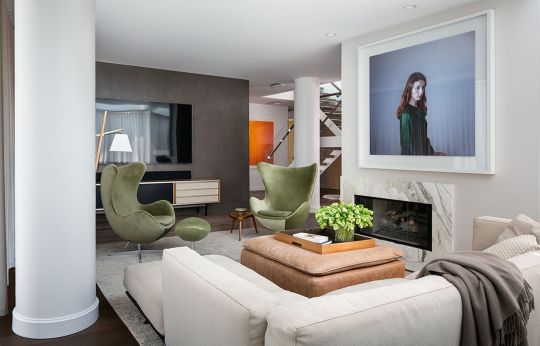
In the realm of interior design, creating visually stunning spaces is only one piece of the puzzle. Equally important is ensuring that these spaces are functional, comfortable, and conducive to the well-being of their occupants. At the heart of designing for functionality lies the principle of ergonomics – the science of designing environments that optimize human performance and enhance user experience.
Let's explore why ergonomics is a critical aspect of interior education and how IIFD - Indian Institute of Fashion & Design (@iifd) integrates this essential discipline into its curriculum.
Understanding Ergonomics:
Ergonomics is the study of how people interact with their environment and the tools within it. By considering human capabilities and limitations, ergonomics seeks to design environments, products, and systems that maximize comfort, safety, and efficiency for users. In the context of interior design, ergonomics plays a crucial role in creating spaces that promote well-being and productivity while minimizing the risk of discomfort or injury.
Enhancing User Experience:
Incorporating ergonomic principles into interior design ensures that spaces are tailored to the needs and preferences of their users. Whether it's designing furniture with adjustable heights to accommodate users of different sizes or positioning workstations to minimize glare and eyestrain, ergonomics helps designers create environments that enhance user comfort, satisfaction, and overall experience.
Promoting Health and Safety:
Beyond improving comfort and usability, ergonomics also plays a vital role in promoting health and safety in interior spaces. Designing ergonomic workstations, for example, can help prevent musculoskeletal disorders such as back pain and repetitive strain injuries. Similarly, optimizing lighting, acoustics, and air quality can contribute to a healthier and more productive indoor environment.
Integrating Ergonomics into Interior Education:
Recognizing the importance of ergonomics in interior design, the Indian Institute of Fashion & Design (IIFD) integrates this essential discipline into its curriculum. Through a combination of theory, practical exercises, and hands-on projects, students at IIFD learn how to apply ergonomic principles to their design practice, ensuring that their creations are not only visually appealing but also functional, comfortable, and user-friendly.
Take Action with IIFD:
Ready to explore the intersection of design and ergonomics and unlock your creative potential in interior education? Join one of the best Interior Design Colleges in India like IIFD - Indian Institute of Fashion & Design and embark on a transformative journey towards a rewarding career in interior design. With expert faculty, industry-relevant curriculum, and state-of-the-art facilities, IIFD offers comprehensive programs that prepare you to excel in the dynamic world of interior design while prioritizing functionality, comfort, and user experience.
Visit IIFD website to learn more and take the first step towards a future in interior education with IIFD.
#Functionality#Interior Design Education#Interior Education#iifd#iifd chandigarh#interiors#Interior Designing#Interior Design Courses#Education#Interior Design Careers#careers#interior design
1 note
·
View note
Text
A Design Guide for Generation Z: Understanding Their Preferences

As the newest generation to enter the workforce and shape the world around us, Generation Z brings with it a unique set of values, preferences, and perspectives. Born between the mid-1990s and early 2010s, Gen Zers are digital natives who have grown up in a world of smartphones, social media, and constant connectivity. When it comes to design, Gen Zers have distinct preferences and expectations that reflect their tech-savvy, socially conscious, and individualistic mindset. In this blog, we'll explore a design guide for Generation Z, understanding their preferences and how designers can create spaces that resonate with this dynamic and diverse generation, with the Indian Institute of Fashion and Design (IIFD) guiding the way.
Embracing Technology
For Generation Z, technology is not just a tool; it's an integral part of daily life. Gen Zers expect spaces to be equipped with the latest technology, from smart home devices and interactive displays to wireless charging stations and high-speed internet access. Designers should incorporate technology seamlessly into the design, creating spaces that are not only functional but also intuitive and user-friendly. Whether designing a workspace, retail environment, or residential unit, integrating technology into the design can enhance the user experience and meet the needs of Gen Zers who are always connected.
Personalization and Customization
Gen Zers value individuality and self-expression, seeking spaces that reflect their unique personalities and tastes. Designers should incorporate elements of personalization and customization into the design, allowing users to tailor the space to their preferences and create a sense of ownership. This could include modular furniture systems, customizable lighting options, or interactive digital displays that can be personalized with user-generated content. By offering flexibility and choice, designers can create spaces that empower Gen Zers to express themselves and make the space their own.
Sustainability and Social Responsibility
As the most environmentally conscious generation to date, Gen Zers prioritize sustainability and social responsibility in their purchasing decisions and lifestyle choices. Designers should incorporate sustainable materials, energy-efficient technologies, and eco-friendly practices into the design, minimizing environmental impact and promoting sustainable living. Additionally, designers should consider the social and ethical implications of their design choices, ensuring that the space is inclusive, accessible, and supportive of diversity and equality. By aligning with Gen Z's values of sustainability and social responsibility, designers can create spaces that resonate with this socially conscious generation.
Authenticity and Transparency
Gen Zers value authenticity and transparency in brands and organizations, preferring genuine experiences and honest communication. Designers should strive to create spaces that are authentic, transparent, and reflective of the brand or organization's values and identity. This could include incorporating local materials and craftsmanship, showcasing the design process, or highlighting the history and heritage of the space. By fostering a sense of authenticity and transparency, designers can build trust and credibility with Gen Zers, creating meaningful connections that resonate with this discerning generation.
Joining the Design Community with IIFD
At IIFD - Indian Institute of Fashion and Design, we understand the importance of understanding and embracing the preferences of Generation Z in design. IIFD interior design courses provide students with the knowledge, skills, and hands-on experience needed to succeed in the dynamic and ever-evolving world of design. With a curriculum that emphasizes creativity, innovation, and sustainability, IIFD prepares students to create spaces that resonate with Gen Zers and meet the needs of future generations.
Designing for the Future
As Generation Z continues to shape the world around us, designers have an exciting opportunity to create spaces that resonate with this dynamic and diverse generation. By understanding their preferences for technology, personalization, sustainability, authenticity, and transparency, designers can create spaces that empower and inspire Gen Zers to live, work, and play in environments that reflect their values and aspirations. With IIFD - Indian Institute of Fashion and Design as your guide, you can learn how to design for the future and make a meaningful impact in the world of design.
Ready to create spaces that resonate with Generation Z? Explore interior design programs at one of the best Interior Design Colleges in India, IIFD - Indian Institute of Fashion & Design, and learn how you can make a difference through design.
Visit IIFD Chandigarh (@iifd) today to learn more about our programs and start your journey toward becoming a skilled and knowledgeable designer. Together, let's design spaces that empower and inspire the next generation.
#Generation Z#Guide#IIFD#iifd#Chandigarh#Careers#Education#interior#interior design course#interiors#iifd chandigarh#interior design#interior designs
0 notes
Text
Find Your Design Philosophy with Minimalism vs. Maximalism
In the world of interior design, finding your design philosophy is akin to discovering your personal style – it's a journey of self-exploration, experimentation, and self-expression. Two prominent design philosophies that often polarize enthusiasts are minimalism and maximalism. While minimalism embraces simplicity, restraint, and clean lines, maximalism celebrates abundance, eclecticism, and bold expression. Let's delve into the essence of minimalism and maximalism, and explore how you can find your design identity amidst these contrasting philosophies.
Embracing Minimalism: Less is More
Minimalism is more than just a design aesthetic; it's a way of life that advocates for simplicity, clarity, and intentionality in every aspect of design. Minimalist interiors are characterized by clean lines, uncluttered spaces, and a neutral color palette, creating a sense of calm, serenity, and balance. Minimalism encourages us to focus on what truly matters and eliminate excess, allowing space for thoughtfulness, mindfulness, and appreciation of the beauty in simplicity.
Celebrating Maximalism: More is More
On the other end of the spectrum lies maximalism – a design philosophy that revels in opulence, extravagance, and abundance. Maximalist interiors are bold, vibrant, and eclectic, featuring an eclectic mix of colors, patterns, textures, and styles that exude personality, creativity, and joie de vivre. Maximalism encourages us to embrace our individuality, express ourselves boldly, and surround ourselves with objects and spaces that bring us joy, inspiration, and a sense of adventure.
Finding Your Design Identity
So, how do you find your design identity amidst the contrasting philosophies of minimalism and maximalism? The key lies in self-reflection, exploration, and experimentation. Take the time to consider your lifestyle, preferences, and values – do you gravitate towards simplicity and order, or do you thrive in environments filled with color, texture, and energy? Explore different design styles, aesthetics, and influences, and pay attention to what resonates with you on a visceral level.
Embracing Balance and Harmony
Ultimately, the beauty of design lies in its ability to evolve and adapt to the unique needs and tastes of individuals. While minimalism and maximalism represent two extremes on the design spectrum, there is room for nuance, hybridity, and personal interpretation. Strive to strike a balance between simplicity and complexity, restraint and abundance, order and chaos, creating spaces that reflect your personality, values, and aspirations.
Your Journey Begins at IIFD
At the Indian Institute of Fashion and Design (IIFD), we celebrate diversity, creativity, and individuality in design, empowering students to find their unique design identity and express themselves authentically. Our interior design courses offer a supportive and nurturing environment where students can explore different design philosophies, experiment with diverse aesthetics, and hone their skills as designers. With a curriculum that encourages critical thinking, creativity, and hands-on learning, IIFD prepares students to embark on a journey of self-discovery and innovation in the dynamic world of interior design.
Ready to explore your design philosophy and unleash your creativity? Explore interior design programs at one of the best Interior Designing Colleges in India IIFD and discover the path that resonates with your unique vision and style.
Contact on at +91 9041766699 today to learn more about our courses and start your journey toward a fulfilling and rewarding career in interior design. Together, let's find your design identity and create spaces that inspire, delight, and reflect who you are.
#Design Philosophy#Designing Philosophy#Philosophy#careers#iifd#education#iifd chandigarh#Minimalism#Maximalism#Interior Design#Interior Designing#Education
0 notes
Text
Integrating Smart Technology into Digital Design
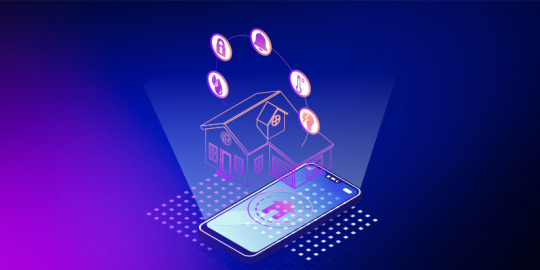
As technology continues to evolve at an unprecedented pace, the world of digital design is undergoing a transformation that extends beyond traditional boundaries. The integration of smart technology into digital design is not just a trend; it's a paradigm shift that enhances user experiences, introduces innovative functionalities, and reshapes the landscape of design possibilities. In this article, we explore the seamless integration of smart technology into the realm of digital design and its implications for the future, with a Call to Action (CTA) on the Indian Institute of Fashion and Design (IIFD) for those eager to explore this exciting frontier.
Interactive User Experiences:
Smart technology has revolutionized how users interact with digital designs. From interactive websites to immersive mobile applications, designers now have the capability to create engaging and dynamic user experiences. Integrating smart technology allows for responsive designs that adapt to user input, creating a more personalized and intuitive interaction.
Internet of Things (IoT) in Design:
The Internet of Things (IoT) has opened up new possibilities for designers by connecting physical devices to the digital realm. Smart homes, wearable technology, and connected appliances provide designers with opportunities to seamlessly blend the physical and digital worlds. Digital designs can now incorporate real-time data from IoT devices, enhancing functionality and user engagement.
Augmented and Virtual Reality (AR/VR):
Augmented Reality (AR) and Virtual Reality (VR) technologies have become integral to the digital design landscape. Designers can now create immersive environments, allowing users to experience products or spaces in a virtual setting. From interactive 3D models to virtual walkthroughs, AR and VR technologies add depth and realism to digital designs.
Smart Typography and Responsive Design:
Smart typography goes beyond static text, incorporating dynamic elements that respond to user interactions. Responsive design, fueled by smart technology, ensures that digital content adapts seamlessly to different devices and screen sizes. This approach enhances accessibility and readability, providing a consistent and user-friendly experience across platforms.
Artificial Intelligence (AI) in Design:
Artificial Intelligence has become a powerful ally for digital designers. Machine learning algorithms analyze user behavior, predict preferences, and automate repetitive design tasks. Smart technology powered by AI contributes to the creation of personalized and adaptive designs that resonate with individual users.
IIFD - Pioneering Smart Design Innovations:
One of the Best Interior Design Colleges in India, IIFD - Indian Institute of Fashion and Design (@iifd) recognizes the transformative impact of integrating smart technology into digital design. With a forward-thinking curriculum, IIFD prepares students to explore the intersection of design and technology. Aspiring designers at IIFD gain hands-on experience with cutting-edge tools and technologies, positioning them at the forefront of the digital design revolution.
Conclusion:
The integration of smart technology into digital design is more than a trend; it's a dynamic shift that is redefining the possibilities of design innovation. From interactive user experiences to the seamless blend of physical and digital realms, smart technology opens up a myriad of opportunities for designers. For those eager to explore this exciting frontier, IIFD - Indian Institute of Fashion and Design serves as a platform to embrace the convergence of design and technology. Take the first step towards a future in smart design by exploring the programs offered by IIFD and becoming a pioneer in the digital design revolution.
#Smart Technology#Technology#careers#iifd#education#iifd chandigarh#Interior Design#Interior#Designs#Interior Designs#Interior Design Courses#interiors
0 notes
Text
Career in Interior Architecture Design
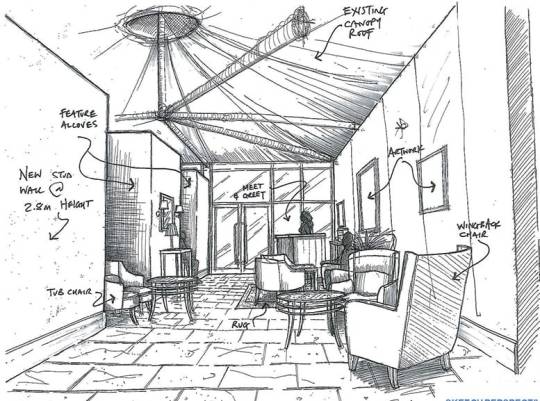
Interior Architecture Design is a captivating field that marries the principles of architecture with the aesthetics of interior design. As we witness a growing emphasis on well-designed and functional spaces, the demand for skilled interior architects is on the rise. In this article, we unravel the intricacies of a career in Interior Architecture Design and why it's an exciting and rewarding path to explore.
Defining Interior Architecture Design:
Interior Architecture Design is more than just arranging furniture; it involves conceptualizing and crafting spaces that seamlessly blend functionality, aesthetics, and structural considerations. Interior architects go beyond surface-level design, often working with architects to ensure that the interior spaces harmonize with the overall architectural vision.
Key Aspects of a Career in Interior Architecture Design:
Space Planning and Functionality:
Interior architects are experts in spatial planning. They analyze how people interact with spaces, considering traffic flow, usability, and the efficient utilization of available space. The goal is to create environments that are not only visually appealing but also highly functional.
Collaboration with Architects:
Collaboration is at the heart of Interior Architecture Design. Interior architects work closely with architects, engineers, and other professionals to ensure that the interior spaces align seamlessly with the overall architectural design. This collaborative approach ensures a holistic and integrated design outcome.
Material and Structural Knowledge:
Interior architects possess a deep understanding of materials, construction techniques, and structural considerations. This knowledge is crucial in creating designs that are not only aesthetically pleasing but also feasible in terms of construction and safety.
Innovation in Design:
Interior Architecture Design allows for a high level of creativity and innovation. Interior architects have the opportunity to experiment with unique design concepts, incorporating the latest trends and technologies to create cutting-edge and visually stunning spaces.
Client Interaction and Communication:
Effective communication is a vital skill in Interior Architecture Design. Interior architects work closely with clients to understand their needs, preferences, and lifestyle. The ability to translate these requirements into a functional and aesthetically pleasing design is key to success in this field.
Career Opportunities:
A career in Interior Architecture Design opens doors to diverse opportunities, including:
Interior Architect
Space Planner
Design Consultant
Project Manager
Sustainable Design Specialist
If you are passionate about shaping environments and creating functional and visually appealing spaces, IIFD - Indian Institute of Fashion and Design (@iifd) offers comprehensive courses in Interior Architecture Design.
Begin your journey into the dynamic world of Interior Architecture Design with the best Interior Designing College in India, IIFD - Indian Institute Of Fashion & Design, In Chandigarh, India. Visit the IIFD website or contact us at +91 9041766699 to learn more about our courses and how IIFD can be your gateway to a fulfilling and rewarding career in Interior Architecture Design. Your journey to crafting innovative and impactful spaces starts with IIFD!
#Interior Architecture Design#Interior Architecture Designing#courses in Interior#courses in Interior Design#Interior Design#Interior Designing#iifd#iifd chandigarh#careers#education#Architecture Design#Architecture
1 note
·
View note
Text
Fashion Design in Post-Graduate Education

Entering the realm of post-graduate education in fashion design is akin to stepping onto a higher runway, where creativity meets advanced expertise, and design mastery reaches new heights. Aspiring fashion designers, armed with foundational knowledge, delve into a world that refines their skills, hones their artistic voices, and prepares them to lead in the ever-evolving fashion industry.
Mastering the Craft:
Post-graduate education in fashion design is a transformative journey where the focus shifts from the basics to mastering the craft. Students delve deeper into design theory, exploring advanced techniques in garment construction, pattern making, and textile manipulation. The curriculum is tailored to challenge and stretch the boundaries of creativity, pushing students to innovate and redefine fashion norms.
Specialization and Expertise:
The post-graduate landscape offers the opportunity for specialization. Whether it's haute couture, sustainable design, fashion technology, or business in the fashion industry, students can tailor their education to align with their passion and career goals. This specialization equips them with a niche expertise that sets them apart in a competitive industry.
Industry Immersion and Real-World Projects:
Post-graduate fashion programs bridge the gap between academia and the real-world fashion industry. Immersive experiences, industry collaborations, and real-world projects become integral components of the curriculum. Students work on projects that mimic the demands of professional settings, providing a taste of the challenges and expectations they will encounter in their future careers.
Cutting-Edge Technology Integration:
In the fast-paced world of fashion, staying abreast of technological advancements is paramount. Post-graduate programs introduce students to cutting-edge technologies such as 3D printing, virtual design software, and sustainable fashion innovations. This integration ensures that graduates are not just designers but tech-savvy professionals ready to embrace the future of fashion.
Global Perspectives and Cultural Influences:
Fashion is a global language, and post-graduate education encourages students to think globally. Programs often incorporate international experiences, exchange programs, or collaborations with global fashion institutions. Exposure to diverse cultural influences enriches students' perspectives, fostering a more inclusive and globalized approach to design.
Faculty Mentorship and Industry Networking:
Post-graduate students benefit from close mentorship with experienced faculty members who are often industry professionals themselves. This mentorship goes beyond academics, offering guidance on career paths, industry insights, and navigating the complexities of the fashion world. Additionally, post-graduate programs provide ample opportunities for networking with industry leaders, opening doors to potential collaborations and career opportunities.
Ready to elevate your creativity and expertise in the world of fashion? Explore IIFD Post-Graduate Fashion Design Programs, where innovation meets specialization. Embark on a transformative journey into the world of fashion design by choosing IIFD - Indian Institute of Fashion and Design (@iifd), A leading Fashion Designing College in India. Explore the features, programs, and achievements of IIFD to find your creative aspirations. Join IIFD (@iifd) to redefine the future of fashion and shape your legacy in the industry.
#fashion design degree#post graduate#post-graduate degree#iifd#careers#education#iifd chandigarh#fashion design college#fashion design education#fashion design institute#fashion design courses#fashion designing courses#fashion design course
0 notes
Text
Interior Design: From Vision to Reality
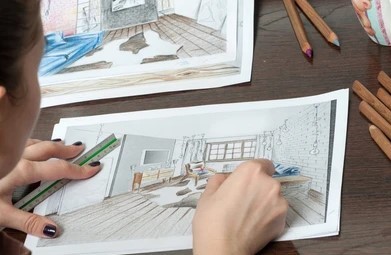
Interior design is a transformative journey that takes an abstract vision and turns it into a tangible, lived experience. From conceptualization to execution, this dynamic process involves a myriad of creative decisions, technical considerations, and a keen understanding of the occupant's needs. Let's embark on a journey that unveils the intricate steps involved in bringing an interior design vision to life.
The Visionary Phase:
Every design journey begins with a vision – a concept that encapsulates the desired look, feel, and functionality of a space. Designers draw inspiration from various sources, creating mood boards, sketches, and conceptual renderings to articulate their ideas. This phase is a playground of creativity, where the seeds of a unique design identity are sown.
The Practical Considerations:
While creativity fuels the vision, practical considerations ground it in reality. Designers must assess the functional needs of the space, consider budget constraints, and factor in any structural or architectural limitations. Balancing the aesthetic vision with these practical elements ensures that the design is not only beautiful but also feasible.
Design Development:
With the vision refined and practicalities considered, the design takes shape in greater detail. Design development involves creating more comprehensive drawings, specifying materials, and finalizing color schemes. It's the phase where the abstract vision starts to acquire a tangible form, laying the groundwork for the next crucial step.
Technical Execution:
The transition from vision to reality requires a seamless execution of technical aspects. This includes detailed construction drawings, specifications for materials and finishes, and collaboration with architects, contractors, and other professionals. Precision is paramount to ensure that the design is translated accurately into the physical space.
Bringing Materials to Life:
Selecting materials is a pivotal step in bridging the gap between vision and reality. Designers choose fabrics, finishes, and furnishings that not only align with the aesthetic vision but also meet quality and durability standards. The tactile and visual aspects of materials contribute significantly to the overall design experience.
Installation and Finishing Touches:
As construction progresses, the vision takes a giant leap towards reality. Installation of furniture, fixtures, and decorative elements brings the design to life. The finishing touches – accessories, artwork, and lighting – elevate the space, adding layers of personality and character.
Client Collaboration:
Throughout the process, collaboration with the client is essential. Designers ensure that the evolving design aligns with the client's expectations and preferences. Regular communication and feedback loops allow for adjustments, ensuring that the final result not only meets but exceeds the client's vision.
The Unveiling:
The culmination of the interior design journey is the grand unveiling of the transformed space. As doors open to the finished design, the vision that once existed in the designer's imagination becomes a tangible reality. The emotions, functionality, and aesthetics blend harmoniously, creating an environment that speaks to both the designer's creativity and the client's aspirations.
Conclusion:
Interior design, from vision to reality, is a testament to the power of creativity and collaboration. It is a process where ideas come to life, spaces are transformed, and the ordinary becomes extraordinary. Each step, from conceptualization to unveiling, is a celebration of the intricate dance between imagination and execution. In the world of interior design, the journey from vision to reality is a masterpiece in itself.
Join One of the best Interior designing colleges in India, IIFD - Indian Institute of Fashion and Design (@iifd), and immerse yourself in an educational experience that stays ahead of design trends. Enroll now to unleash your creativity and become part of the future of spacious living with IIFD – where innovation meets education.
#Interior Design#Interior Designing#Interior Design course#Interior Design courses#Interior Design college#Interior Design colleges#Interior Design education#Interior Design careers#careers#iifd#education#iifd chandigarh
0 notes
Text
Crafting Your Future: How to Make a Career in Interior Design
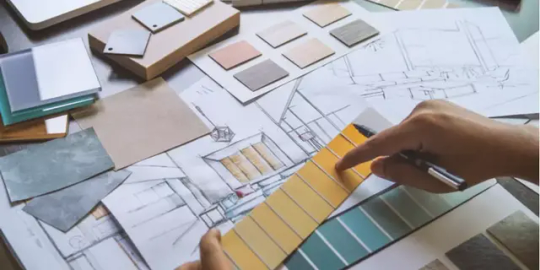
Embarking on a career in interior design is a thrilling journey into the realm of creativity, aesthetics, and functional spaces. If you're passionate about transforming environments and have a keen eye for design, a career in interior design might be the perfect fit. In this blog, we'll explore the steps to make a successful career in interior design, opening the door to a world where every space is a canvas for your artistic vision.
Educational Foundation:
The first step in making a career in interior design is acquiring the necessary education. Consider enrolling in a reputable interior design program that provides a comprehensive curriculum covering design principles, spatial planning, materials, and technology. The Indian Institute of Fashion and Design (IIFD) stands out as a premier institution offering top-notch interior design courses in India.
Developing a Design Portfolio:
Build a strong portfolio showcasing your design projects, both academic and personal. Your portfolio is a visual representation of your skills, creativity, and design philosophy. Include a variety of projects to demonstrate versatility, and ensure that your portfolio reflects your unique design style.
Internships and Real-world Experience:
Gain practical experience through internships and real-world projects. This hands-on experience not only enhances your skills but also provides valuable insights into the day-to-day challenges and opportunities in the field. Many design firms and companies offer internships to aspiring designers.
Networking and Industry Exposure:
Attend design events, workshops, and networking functions to connect with industry professionals. Building a network within the design community opens doors to mentorship, collaboration, and potential job opportunities. Stay updated on industry trends and immerse yourself in the design world.
Stay Current with Design Trends and Technology:
The field of interior design is dynamic, with trends and technologies constantly evolving. Stay informed about the latest design trends, materials, and technological advancements. This knowledge not only enhances your design capabilities but also positions you as a forward-thinking designer.
Build Strong Communication Skills:
Effective communication is crucial in the world of design. Develop strong verbal and visual communication skills to articulate your design ideas clearly to clients, colleagues, and other stakeholders. The ability to convey your vision is as important as the design itself.
Consider Specialization and Continuous Learning:
Interior design offers various specializations, such as residential, commercial, hospitality, and sustainable design. Consider specializing in an area that aligns with your interests. Additionally, engage in continuous learning to stay ahead in the competitive design landscape.
Craft Your Career at IIFD:
IIFD - Indian Institute of Fashion and Design (@iifd) is one of the best interior design colleges in India & is your gateway to a fulfilling career in interior design. With a curriculum designed to nurture creativity, industry-experienced faculty, and a commitment to excellence, IIFD provides the ideal platform to launch your career.
Design Your Future with IIFD
Ready to turn your passion for design into a rewarding career? Explore the interior design courses offered by IIFD and embark on a journey where creativity meets professionalism. Join a community of aspiring designers, learn from industry experts, and shape your future in interior design. Your career in design begins at IIFD - take the first step towards a vibrant and fulfilling design career!
#interior design courses#interior design course#interior designing courses#interior design#interior designing#iifd#iifd chandigarh#careers#education#interior courses#interior design education
0 notes
Text
Fashion Trends for 2023 and Beyond: A Glimpse into the Future of Style
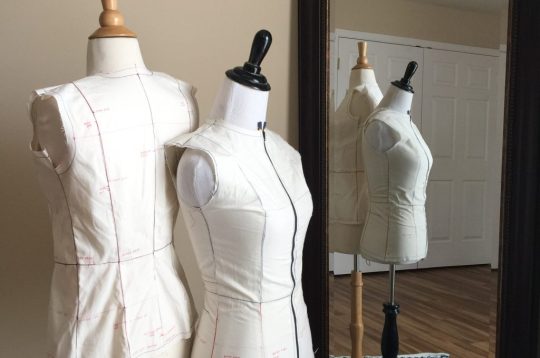
Fashion is an ever-evolving art form, constantly shaped by cultural, societal, and technological influences. As we step into 2023 and beyond, the fashion industry is poised for exciting transformations. In this article, we'll explore the emerging fashion trends that are set to define the coming years and provide a glimpse into the future of style.
Sustainability Takes Center Stage:
The sustainable fashion movement continues to gain momentum. In 2023 and beyond, consumers are expected to demand greater transparency, eco-friendly materials, and ethical practices from fashion brands. This shift is pushing designers and companies to innovate in areas such as zero-waste fashion, recycled materials, and circular fashion systems that minimize waste and promote longevity.
Tech-Infused Fashion:
Fashion and technology are merging in intriguing ways. Wearable tech, smart textiles, and garments with integrated sensors are becoming more mainstream. Expect to see clothing that can monitor health metrics, change color on command, or adapt to environmental conditions. The fusion of fashion and technology is not only functional but also opens up new avenues for creativity.
Gender Fluidity Continues to Rise:
Fashion is becoming increasingly gender-neutral and inclusive. Gender fluidity is a growing trend, with designers blurring traditional boundaries between men's and women's fashion. Expect to see more androgynous silhouettes, diverse casting in fashion campaigns, and a focus on clothing that allows individuals to express their unique identities.
Nostalgia Meets Modernity:
The nostalgia trend is here to stay, but with a modern twist. Fashion designers are drawing inspiration from various eras, including the 60s, 70s, 80s, and 90s, and reinterpreting iconic looks for the present day. This fusion of past and present creates a sense of familiarity and freshness simultaneously.
Bold Colors and Prints:
Vibrant colors and bold prints are set to dominate runways and street style. From neon hues to statement-making patterns, fashion in 2023 and beyond is all about self-expression and making a visual impact. Don't be surprised to see head-to-toe monochromatic looks or clashing prints that challenge traditional notions of style.
Slow Fashion Movement Grows:
While fast fashion isn't disappearing, the slow fashion movement is gaining ground. Consumers are increasingly valuing quality over quantity and seeking out timeless, well-crafted pieces. Sustainable materials, artisanal craftsmanship, and long-lasting design will play a pivotal role in this shift towards mindful consumption.
Inclusive Sizing and Representation:
The fashion industry is embracing body diversity like never before. More brands are expanding their size ranges to be more inclusive of all body types. Additionally, there is a growing emphasis on featuring models and influencers who represent a wide spectrum of ages, sizes, races, and abilities.
Virtual Fashion and Metaverse Influences:
The metaverse and virtual reality are influencing fashion in unique ways. Virtual fashion shows, digital clothing, and virtual fashion items for avatars are emerging trends. As the metaverse continues to evolve, fashion will increasingly have a digital presence.
DIY and Customization:
Personalization and do-it-yourself (DIY) fashion are on the rise. Consumers are seeking ways to make their clothing unique, whether through custom embroidery, upcycling, or designing their own pieces. Brands that offer customization options are likely to thrive in this trend.
Mindful Consumerism:
In 2023 and beyond, consumers are becoming more discerning and mindful about their fashion choices. They're looking for brands with strong ethical values, transparency, and a commitment to positive social and environmental impact. Shopping with purpose and intention is becoming a fashion statement in itself.
Join the best fashion design colleges in India - IIFD and unleash your creativity, explore new horizons, and transform your passion into a successful career in fashion. Your journey begins here. Learn more at the IIFD - A Leading Fashion Designing College.
Conclusion: An Exciting Future for Fashion
As we journey into 2023 and beyond, the fashion landscape promises to be diverse, inclusive, and dynamic. Sustainability, technology, self-expression, and conscious consumerism are at the forefront of the industry. Fashion is evolving to meet the changing needs and values of society, ensuring that it remains a powerful form of self-expression and a reflection of our ever-evolving world. Whether you're a trendsetter or simply love to express yourself through your clothing, the future of fashion offers something for everyone. It's a thrilling time to be part of the ever-evolving world of style.
#iifd#iifd chandigarh#fashion design college#fashion designing colleges#fashion design courses#careers#students#fashion design education#fashion design course
0 notes
Text
From Sketch to Stitch: The Journey of a Fashion Designer
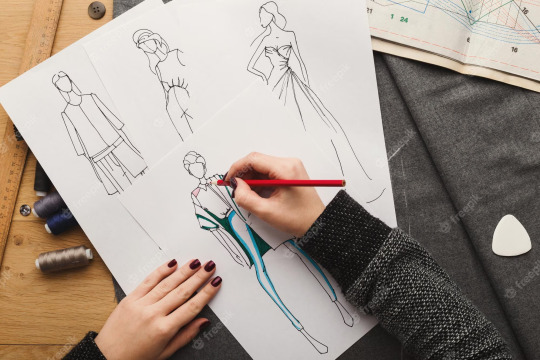
Fashion design is a captivating art form that marries creativity and craftsmanship to create clothing and accessories that transcend mere function and become works of art. Behind every stunning outfit or accessory you see on the runway or in a boutique, there is an intricate journey that starts with a simple sketch and culminates in a carefully crafted garment. In this article, we unravel the fascinating journey of a fashion designer, from the first stroke of a pencil to the final stitch.
The Spark of Inspiration
Every fashion designer's journey begins with inspiration. It might come from nature's beauty, architectural wonders, historical eras, personal experiences, or even the bustling streets of a city. The designer's keen eye and open heart observe the world around them, extracting elements that resonate with their vision and creativity. This initial spark is the foundation upon which the entire creative process is built.
Conceptualization and Sketching
With inspiration as their guide, the fashion designer embarks on the journey of conceptualization. During this phase, the designer refines the initial idea, considering practicality, functionality, and marketability. Sketches and mood boards come to life, allowing the designer to visualize their concepts in intricate detail. These sketches serve as the blueprint for the garments to come.
Material Exploration
Materials are the very essence of fashion design. The choice of fabrics, textiles, and materials is a pivotal step in the process. Designers explore a wide range of options, taking into account factors like texture, drape, color, and durability. The choice of materials greatly influences the final product's feel, look, and wearability.
Pattern Making and Prototyping
Once the sketches are perfected and the materials are selected, the designer proceeds to create patterns. This process involves intricate calculations and precise measurements to transform 2D sketches into 3D forms. Prototyping is essential to test the fit, form, and functionality of the garment. Adjustments are made as necessary, ensuring the piece aligns with the original vision.
The Art of Stitching and Tailoring
Fashion design would be incomplete without the skilled hands of tailors and seamstresses who bring the design to life. The art of stitching and tailoring requires expertise and precision, ensuring each seam, pleat, and button is placed with meticulous care. It is during this phase that the garment takes its final form, transitioning from a concept on paper to a tangible creation.
Detailing and Embellishment
Detailing and embellishment add a layer of uniqueness and sophistication to a fashion piece. Whether it's intricate embroidery, beadwork, sequins, or hand-painted motifs, these elements elevate the design, making it a work of art. Designers often collaborate with skilled artisans to achieve these intricate details, turning a simple garment into a masterpiece.
Quality Control and Final Adjustments
Before the fashion piece is ready to meet the world, it undergoes rigorous quality control. Every stitch is inspected, every seam reinforced, and every detail scrutinized. Final adjustments are made to ensure the garment meets the highest standards of craftsmanship and design.
Presentation and Showcase
The journey of a fashion designer culminates in the presentation and showcase of their creations. Fashion shows, exhibitions, and showrooms serve as platforms for designers to unveil their collections to the world. These events are not just about displaying the garments but also conveying the inspiration, story, and emotion behind the collection.
Join IIFD - Indian Institute of Fashion and Design the best fashion design college in India and unleash your creativity, explore new horizons, and transform your passion into a successful career in fashion. Your journey begins here.
Conclusion: A Journey of Creativity and Craftsmanship
The journey of a fashion designer is a testament to human creativity and craftsmanship. It is a process that takes an idea and transforms it into a tangible, wearable piece of art. From the initial spark of inspiration to the final stitch, every step in the journey requires dedication, skill, and an unwavering passion for design.
As we unravel the journey from sketch to stitch, we gain a deeper appreciation for the designers who bring beauty and innovation to our wardrobes. Fashion design is not just about clothing; it is a celebration of creativity and a reflection of the ever-evolving tapestry of our culture and society. It is a journey of self-expression and storytelling through fabric, color, and form, and it continues to inspire and captivate us with its boundless possibilities.
1 note
·
View note